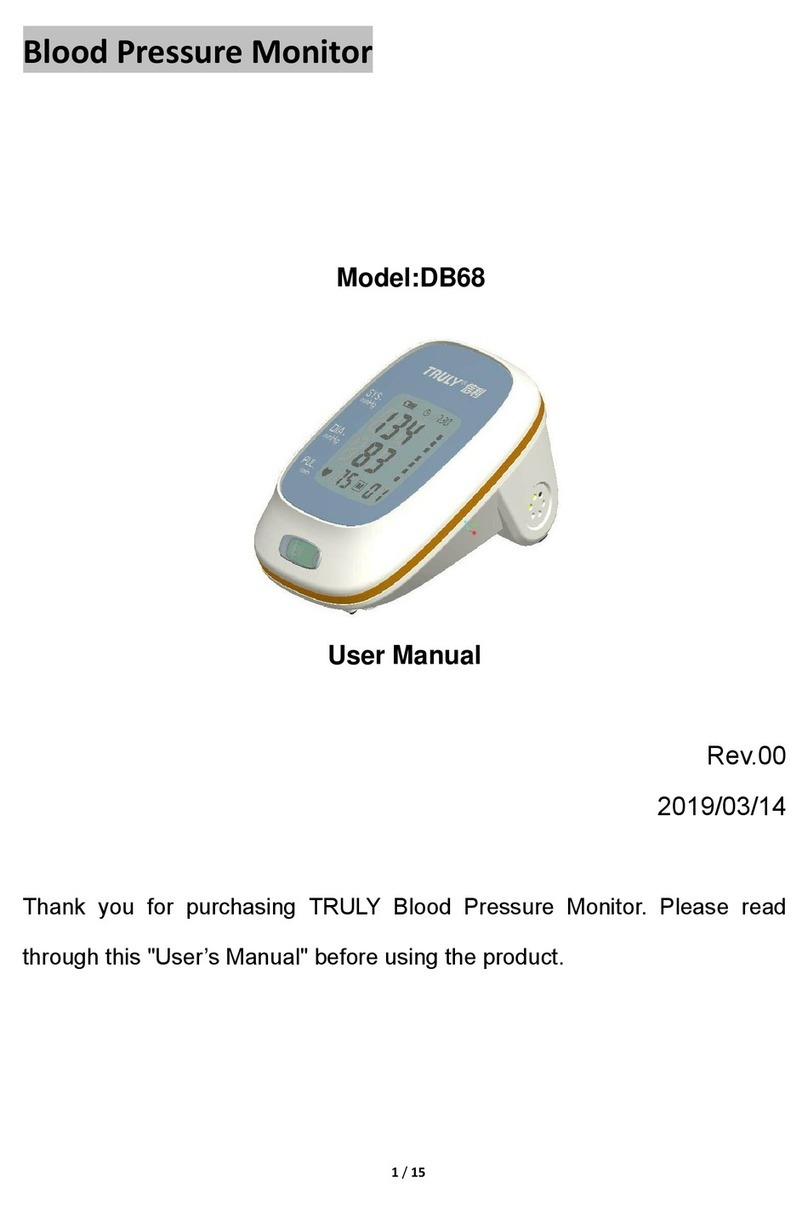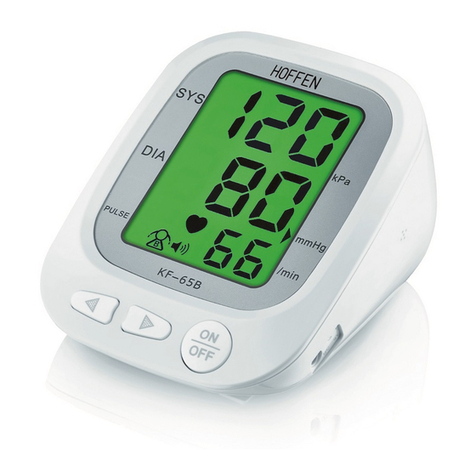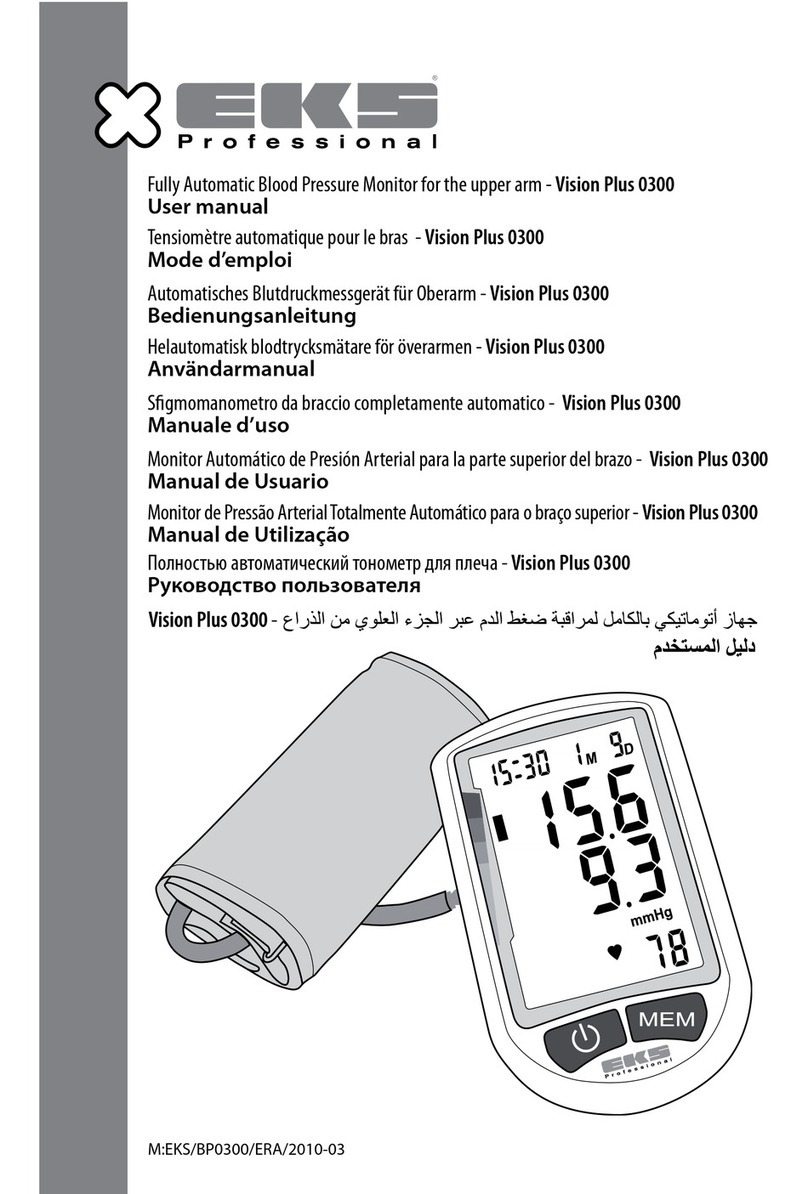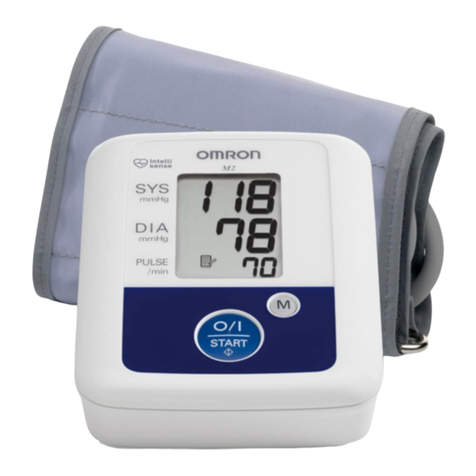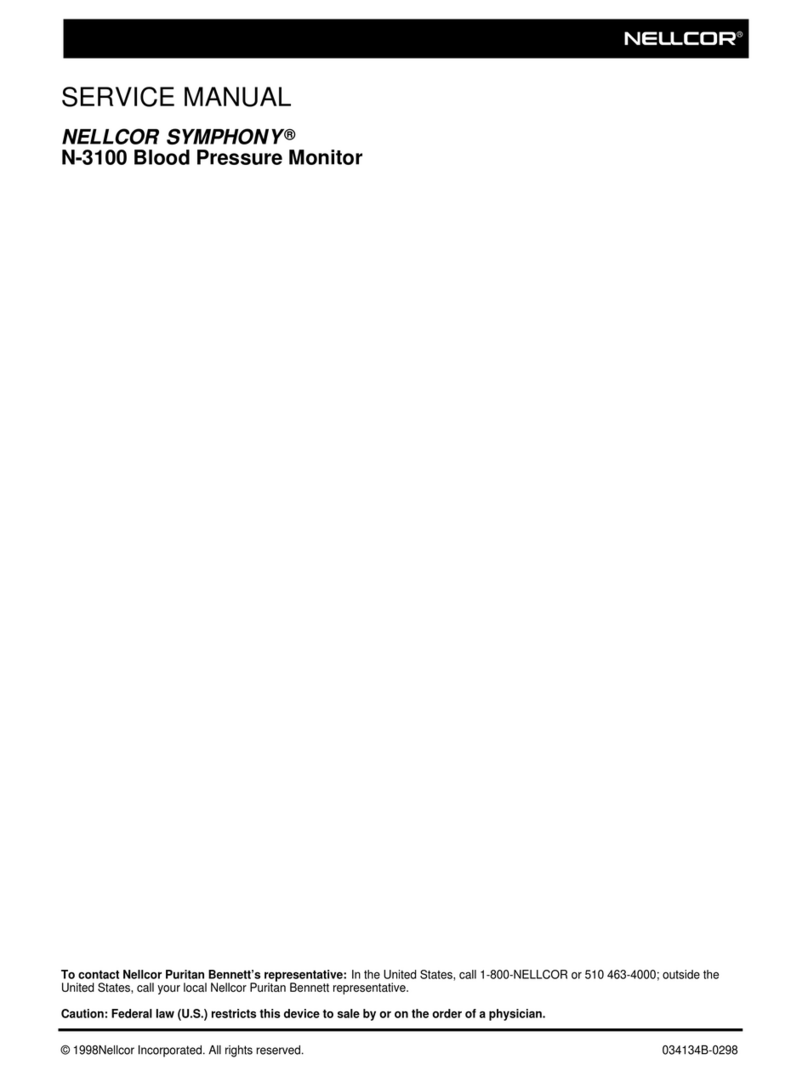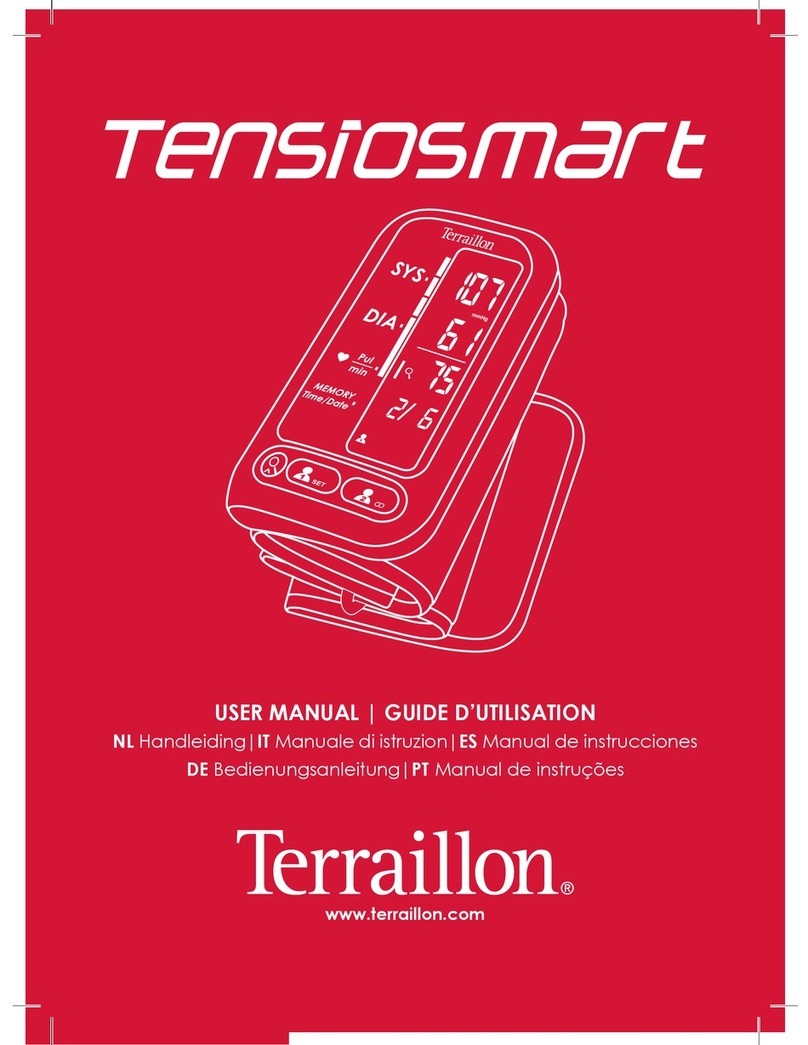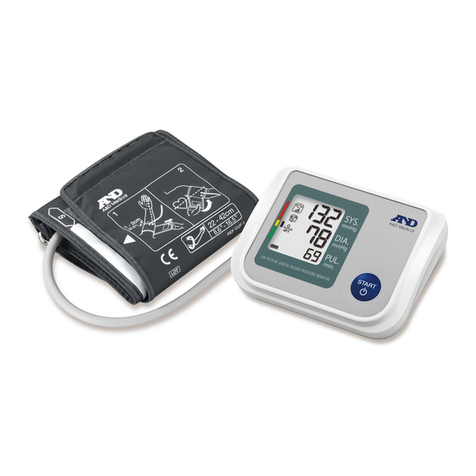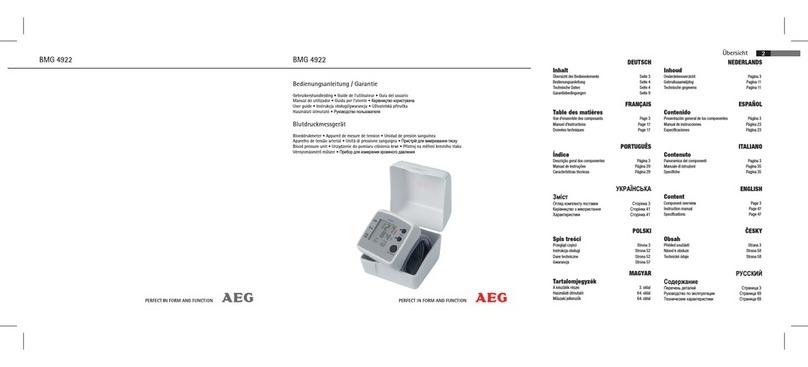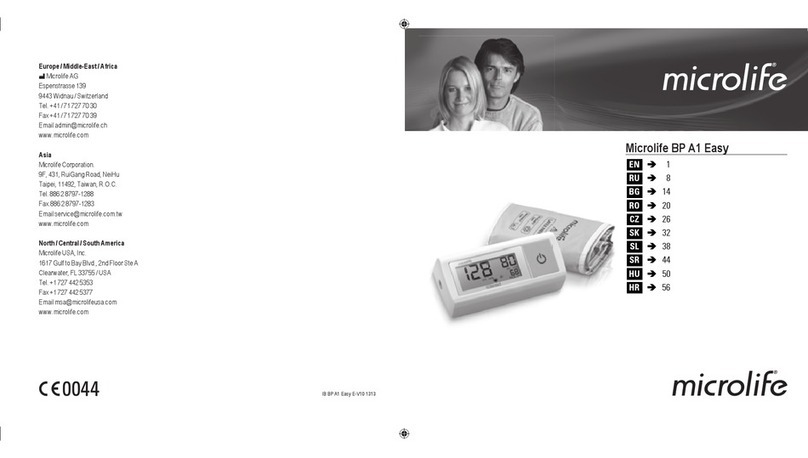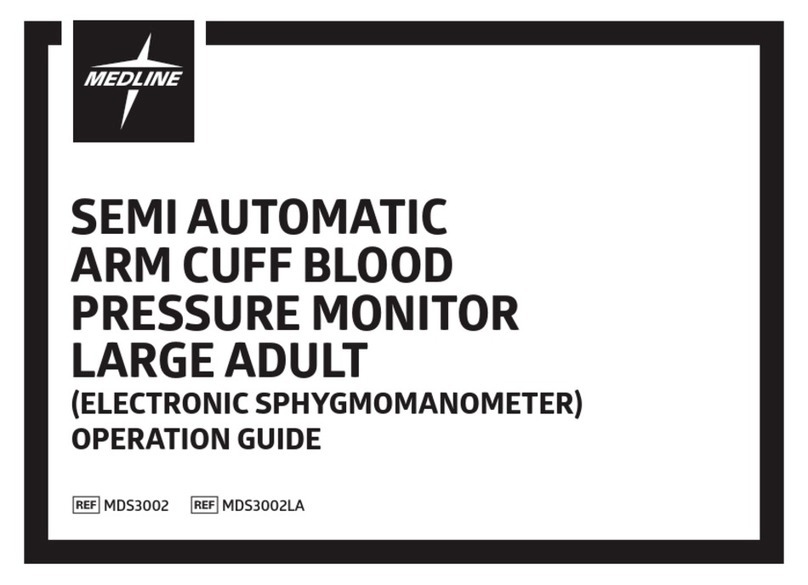2
IMPORTANT INFORMATION
• This Blood Pressure Monitor does not replace examination
by a physician. As your doctor is the one person best
qualified to interpret your results, we recommend that
you keep a blood pressure journal to bring to your visits
to your healthcare professional.
• This device is intended for use by adults only.
• This device is intended for non-invasive measuring and
monitoring of arterial blood pressure. It is not intended
for use on extremities other than the arm or for functions
other than obtaining a blood pressure measurement.
• Do not confuse self-monitoring with self-diagnosis.
This unit allows you to monitor your blood pressure.
Do not begin or end medical treatment based solely
on readings obtained from this device. Always consult
a physician before starting any treatment.
• If you are taking medication, consult your physician to
determine the most appropriate time to measure your
blood pressure. Never change a prescribed medication
without consulting your physician.
• If the cuff pressure exceeds 37.24 kPa (280 mmHg), the
unit will automatically deflate. Should the cuff not
deflate when pressure exceeds 37.24 kPa (280 mmHg),
detach the cuff from the arm and press the (START/STOP
button to stop inflation.
• To avoid measurement errors, carefully read this manual
before using the product.
ATTENTION













